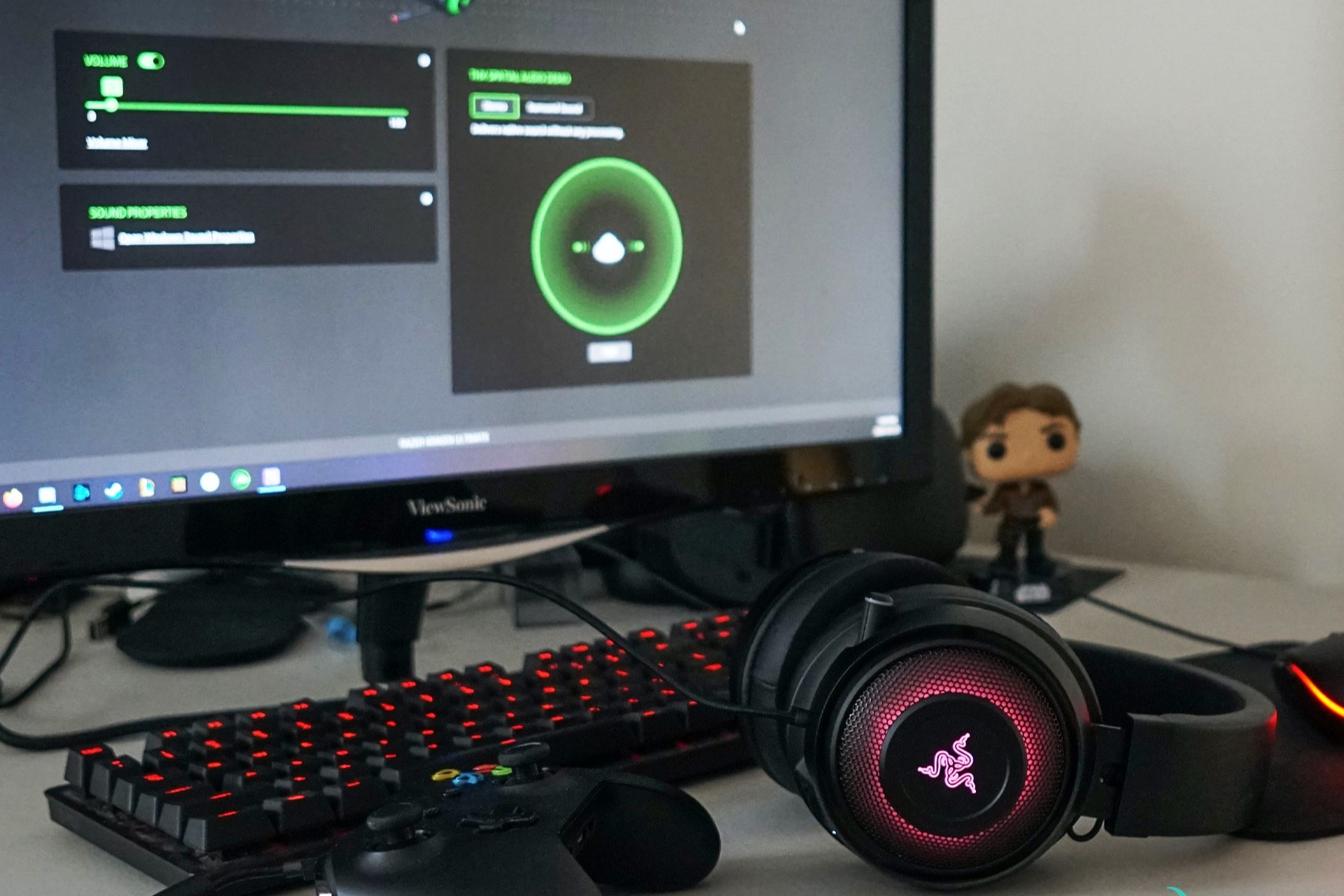Checking Compatibility
Before setting up your Razer headset on your PC, it’s crucial to ensure that the device is compatible with your system. This step will help you avoid potential issues and guarantee a seamless user experience.
First, determine the model of your Razer headset and check the manufacturer’s specifications to confirm its compatibility with your PC’s operating system. Most Razer headsets are designed to work with Windows and macOS, but it’s essential to verify this information to prevent any compatibility hiccups.
Next, consider the connection type of your Razer headset. Whether it uses USB, 3.5mm audio jacks, or wireless connectivity, make sure that your PC has the corresponding ports or adapters. For wireless headsets, ensure that your PC supports the necessary wireless protocols, such as Bluetooth or the headset’s proprietary wireless technology.
If your Razer headset comes with additional features, such as virtual surround sound or customizable lighting, check if your PC meets the hardware and software requirements to enable these functionalities. Some advanced features may require specific system specifications or software support, so it’s vital to confirm compatibility for optimal performance.
Lastly, consider any firmware or driver updates for your Razer headset. Visit the official Razer website or use the Razer Synapse software to check for the latest updates compatible with your PC’s operating system. Keeping the headset’s firmware and drivers up to date can resolve compatibility issues and ensure that you have access to the latest features and improvements.
Installing Razer Synapse
Razer Synapse is a powerful configuration software that allows you to customize and optimize your Razer headset’s settings, including audio preferences, equalizer adjustments, and lighting effects. To unleash the full potential of your Razer headset, follow these steps to install Razer Synapse on your PC:
- Visit the Razer Support Website: Navigate to the official Razer website and locate the support section. Here, you can find the Razer Synapse software for download. Ensure that you download the version compatible with your PC’s operating system, whether it’s Windows or macOS.
- Download and Install: Once you’ve located the Razer Synapse software for your operating system, proceed to download the installation file. After the download is complete, run the installer and follow the on-screen instructions to install Razer Synapse on your PC.
- Create a Razer Account: During the installation process, you may be prompted to create a Razer account or log in with your existing credentials. This account will allow you to access Razer Synapse’s cloud-based features, such as saving your custom settings and profiles.
- Connect Your Razer Headset: After installing Razer Synapse, connect your Razer headset to your PC using the appropriate connection method. Once connected, Razer Synapse should automatically detect the headset and display it in the software interface.
- Update Firmware and Drivers: Upon connecting your Razer headset, Razer Synapse may prompt you to update the headset’s firmware or drivers. It’s recommended to proceed with these updates to ensure that your headset is running the latest software, which can enhance compatibility and performance.
Once Razer Synapse is successfully installed on your PC and your Razer headset is connected, you’ll have access to a wide range of customization options, from audio settings to advanced features tailored to your specific headset model.
Connecting the Headset
After confirming compatibility and installing Razer Synapse, the next step is to connect your Razer headset to your PC. The method of connection may vary depending on the headset model and your preferences. Here’s a guide to help you seamlessly connect your Razer headset:
- Wired Connection: If your Razer headset utilizes a wired connection, such as a USB cable or 3.5mm audio jacks, simply plug the corresponding connector into the appropriate port on your PC. USB connections offer a straightforward plug-and-play experience, while 3.5mm audio jacks may require you to configure the audio input and output settings on your PC.
- Wireless Connection: For wireless Razer headsets, follow the manufacturer’s instructions to pair the headset with your PC. This typically involves activating the headset’s wireless mode and using your PC’s Bluetooth settings to discover and connect to the headset. Some wireless Razer headsets come with a dedicated wireless receiver that plugs into a USB port on your PC for seamless connectivity.
- Razer Synapse Recognition: Once your Razer headset is connected to your PC, launch the Razer Synapse software. The software should automatically recognize and display your headset in the interface, allowing you to access its settings and customization options.
Upon successful connection, test the audio output and microphone input of your Razer headset to ensure that it’s functioning as expected. If you encounter any issues, refer to the troubleshooting tips or support resources provided by Razer to address connectivity problems.
With your Razer headset successfully connected to your PC, you’re now ready to delve into the audio settings and customization options offered by Razer Synapse to tailor the headset’s performance to your preferences.
Adjusting Audio Settings
Once your Razer headset is connected to your PC, you can fine-tune the audio settings to optimize the sound quality and personalize your listening experience. Razer Synapse provides a user-friendly interface for adjusting various audio parameters, allowing you to achieve the desired audio output. Here’s how to adjust the audio settings using Razer Synapse:
- Equalizer Settings: Razer Synapse offers an equalizer feature that enables you to adjust the headset’s audio frequencies to suit different music genres, gaming environments, or multimedia content. Experiment with the equalizer presets or create custom profiles to enhance the bass, treble, and overall balance of the audio output.
- Surround Sound: If your Razer headset supports virtual surround sound, Razer Synapse allows you to enable and customize this feature. Virtual surround sound can provide an immersive audio experience in games and movies, simulating spatial audio cues for improved positional awareness.
- Mic Monitoring: Some Razer headsets offer mic monitoring, which allows you to hear your own voice in the headset as you speak. With Razer Synapse, you can adjust the mic monitoring volume to ensure that you can hear yourself clearly without being distracted by excessive feedback.
- Volume and Balance: Razer Synapse provides simple controls for adjusting the headset’s volume and balance between the left and right audio channels. Fine-tune these settings to achieve a comfortable listening level and ensure that the audio is evenly distributed across both ear cups.
- Custom Audio Profiles: Razer Synapse allows you to create and save custom audio profiles tailored to specific preferences or usage scenarios. Whether you prefer a profile optimized for gaming, music, or voice communication, you can save and switch between different audio configurations effortlessly.
By leveraging the audio settings within Razer Synapse, you can personalize your Razer headset’s audio output to match your unique preferences and elevate your overall listening experience. Experiment with different settings and profiles to discover the optimal audio configuration that enhances your enjoyment of games, music, and multimedia content.
Customizing with Razer Synapse
Razer Synapse offers a plethora of customization options that empower you to tailor your Razer headset to your exact specifications. From personalized lighting effects to advanced mic settings, Razer Synapse provides a comprehensive suite of features for optimizing your headset’s performance. Here’s a guide to customizing your Razer headset using Razer Synapse:
- Chroma RGB Lighting: If your Razer headset features Chroma RGB lighting, Razer Synapse allows you to customize the lighting effects with a spectrum of colors and dynamic patterns. Personalize the lighting to match your gaming setup or create immersive visual effects that synchronize with in-game events and audio cues.
- Mic Settings: Razer Synapse enables you to fine-tune the microphone settings of your headset, including adjusting the mic sensitivity, noise cancellation, and voice clarity. These settings can enhance the quality of your voice communication during gaming sessions or online calls.
- Button Customization: Some Razer headsets come with programmable buttons or controls. With Razer Synapse, you can assign custom functions or macros to these buttons, allowing for convenient access to specific commands or shortcuts without leaving your game or application.
- Cloud Storage: Razer Synapse offers cloud-based storage for saving your custom settings and profiles. This feature ensures that your personalized configurations are accessible across multiple devices, allowing you to maintain consistency in your setup regardless of the system you’re using.
- Performance Optimization: Razer Synapse provides optimization features, such as power management settings and performance tweaks, to maximize the capabilities of your Razer headset. These options can help extend battery life for wireless headsets or enhance audio performance for wired models.
By leveraging the customization capabilities of Razer Synapse, you can transform your Razer headset into a tailored audio and visual experience that aligns with your preferences and gaming style. Experiment with different settings and configurations to unlock the full potential of your Razer headset and immerse yourself in a personalized audio and visual environment.
Troubleshooting Tips
While setting up your Razer headset on your PC, you may encounter occasional challenges that can be resolved with some troubleshooting techniques. Here are some helpful tips to address common issues and ensure a smooth experience:
- Driver and Firmware Updates: If your Razer headset is not being recognized or is experiencing connectivity issues, ensure that you have the latest drivers and firmware installed. Visit the Razer website or use Razer Synapse to check for updates and apply them accordingly.
- Connection Stability: For wireless headsets, ensure that the wireless receiver is plugged into a USB port with a stable connection. Avoid using USB hubs or ports with potential interference, and keep the headset within the recommended range for optimal signal strength.
- Audio Input/Output Settings: If you’re experiencing audio problems, verify that the correct audio input and output devices are selected in your PC’s sound settings. Ensure that the headset is set as the default communication device to enable proper voice chat functionality.
- Compatibility Mode: In some cases, older Razer headset models may require compatibility mode to function seamlessly with newer operating systems. Right-click on the Razer Synapse executable or shortcut, navigate to Properties, and select the compatibility tab to enable compatibility mode if necessary.
- USB Port Selection: When using a USB-connected Razer headset, try plugging it into different USB ports on your PC to rule out potential port-specific issues. Some USB ports may have varying power outputs or data transfer rates that can impact the headset’s performance.
- Reset and Reconnect: If all else fails, perform a reset of your Razer headset according to the manufacturer’s instructions and reconnect it to your PC. A fresh connection may resolve intermittent issues related to software or hardware configurations.
By employing these troubleshooting tips, you can effectively address common challenges associated with setting up and using your Razer headset on your PC. In the event of persistent issues, consider reaching out to Razer’s customer support for further assistance and guidance tailored to your specific situation.


